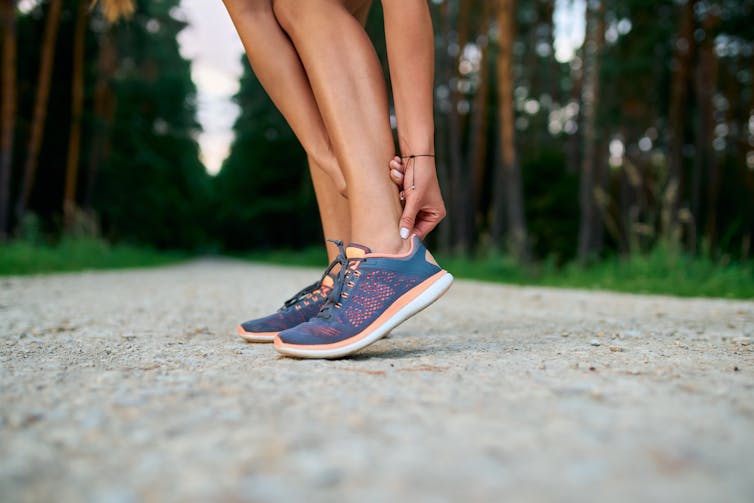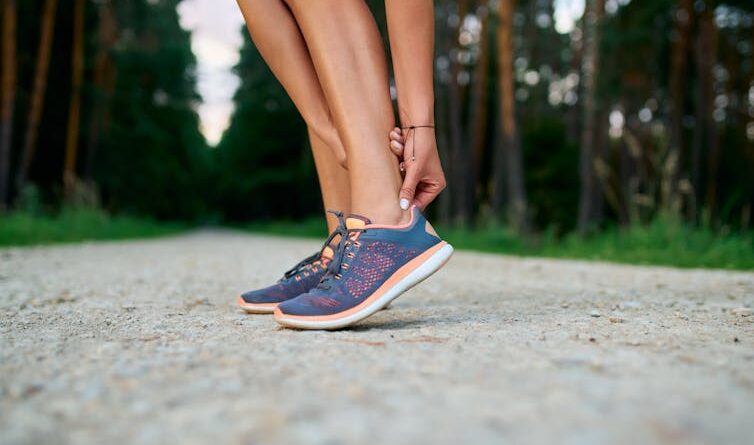Tendons play an important role in our health and fitness – here’s how to keep them strong
When it comes to exercise, most exercises focus on building strength and definition in your muscles. But our muscles are not the only parts of our body that help us lift, run and do most of our daily activities.
Our tendons are an important but overlooked part of the musculoskeletal system – they serve an equally important role as our muscles in our ability to move.
Tendons are made of collagenous fibers that give them their unique strength – the amount of stress they can withstand while being stretched or pulled. They are built to withstand high levels of tension under load – they work together with their connective tissue to transmit force and allow movement.
Tendons have a unique ability to store and release energy – it’s like a spring. Although this ability is especially useful when we run or jump, our muscles also work hard during daily activities, such as walking or climbing stairs. Strong tendons can also reduce the risk of falling as we age.
But age and long-term overuse (commonly seen in athletes) can increase the risk of tendon rupture. Fortunately, the right type of exercise can help build tendon strength and keep it fit.
Tendon health
In order to build strong tendons, the goal is to make them tough.
This may seem counterintuitive, as stiffness is the opposite of what we want our muscles and joints to feel. But for tendons, this is an important change that helps them manage the pressures placed on them. Tight tendons can transfer energy from muscles to bones more efficiently – improving how well we move.
It may help to think of a spring in a pogo stick. If the season was loose, you would probably find it difficult to jump. But as the season ends, you will find it easier.
In order to build strong, hard tendons, you need to challenge them with resistance – such as weights. Research shows that the load is more important for adaptation than the type of movement used. So it’s important to challenge your tendons if you want to strengthen them.
It will also take time for tendons to adapt due to their dense, fibrous nature. While muscles can regenerate within hours, tendons have a slow recovery rate after exercise and need a few days to adapt.
So to see lasting changes in tendon health, you will need to train them repeatedly for weeks and months.

baranq/ From Shutterstock
It is also important to focus on building muscle strength at the same time you are trying to build tendon strength. These two go hand in hand – and an imbalance between the two can lead to tendon injury.
When the muscle is much stronger than its tendons, the latter may be overused. This can result in tendinopathy (an overuse injury characterized by pain and the inability to bear loads). On the other hand, when muscle weakness is mild, muscle injuries are more likely to occur. Exercises should aim to challenge both your muscles and tendons.
Exercise your tendons
Here are a few tips to help you build tendon health:
-
Proceed slowly: Increase the amount of stress placed on the tendons gradually so that they have time to adapt to these new demands. This means gradually increasing the intensity of your exercise. Other ways to change your strength include changing the time you exercise or increasing the weight you lift. Change only one part of your exercise at a time to avoid putting your tendons under too much stress.
-
Grab it: Isometric training is where you contract the muscles without moving. There are many health benefits of isometric training – not least because it loads the tendons, which are important for flexibility. But remember that the weight of the load is very important for the health of the tendon – so start by holding an isometric position (such as a wall bench or calf raise) for five to ten seconds. As you get stronger, increase strength by holding it longer or adding weight. This will ensure that your tendons are challenged effectively.
-
Change your exercise: A variety of exercises can help promote balanced development of muscles and tendons while simultaneously reducing overall stress on the tendon. So instead of exercising multiple times in one week, try alternating your speed with cycling or swimming. Or maybe focus on upper body exercises instead of some lower leg strength aspect.
-
Relax: Taking days off between workouts is important not only to help your tendon adapt, but to avoid overuse injury. Although the recovery time you will need will vary from person to person, as a general rule of thumb, taking a day or two off between high-impact activities will help you a lot. If you don’t intend to take the day off work completely, active rest (such as gentle walking) can also help as this still allows your tendons to heal without damaging them.
The more active you are in your daily life, the healthier your muscles will be. This will enable you to carry out your daily activities for a long time, while reducing the risk of injury.
#Tendons #play #important #role #health #fitness #heres #strong
